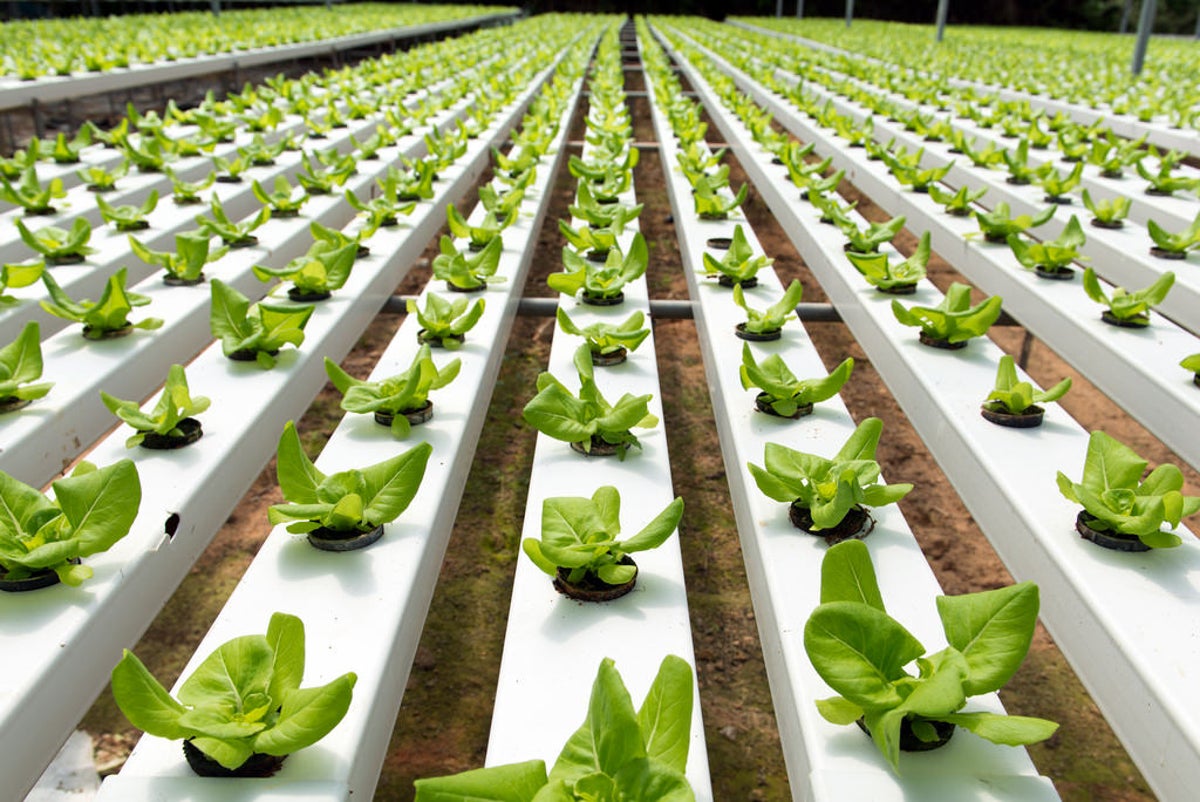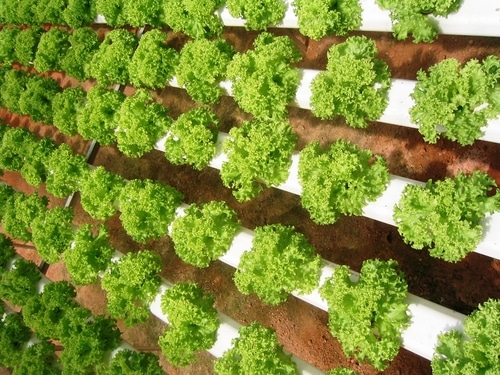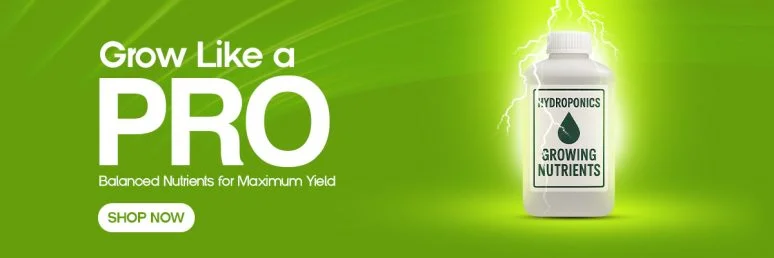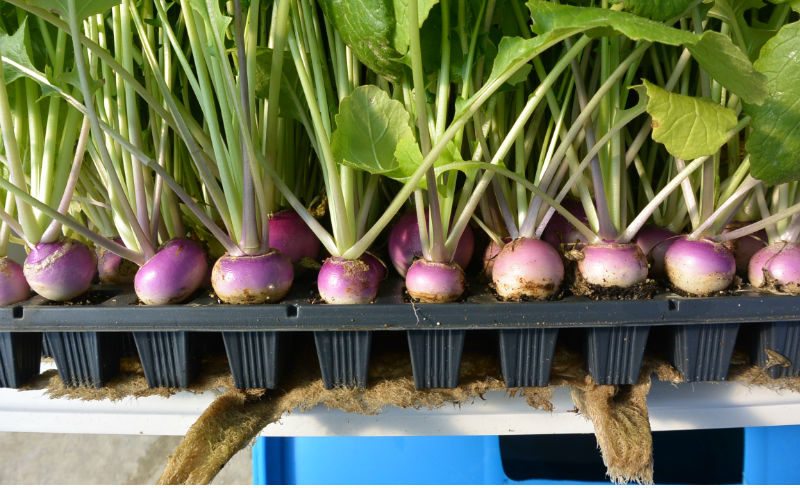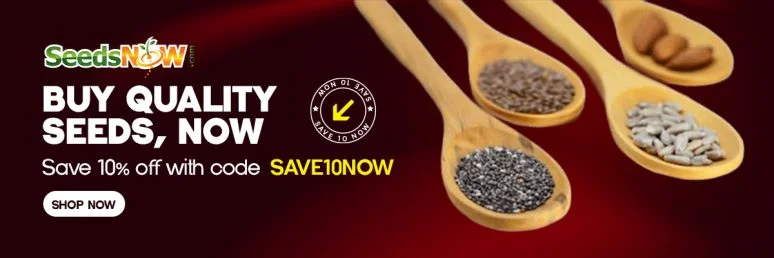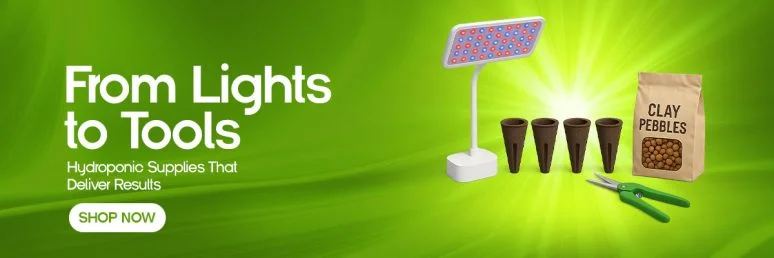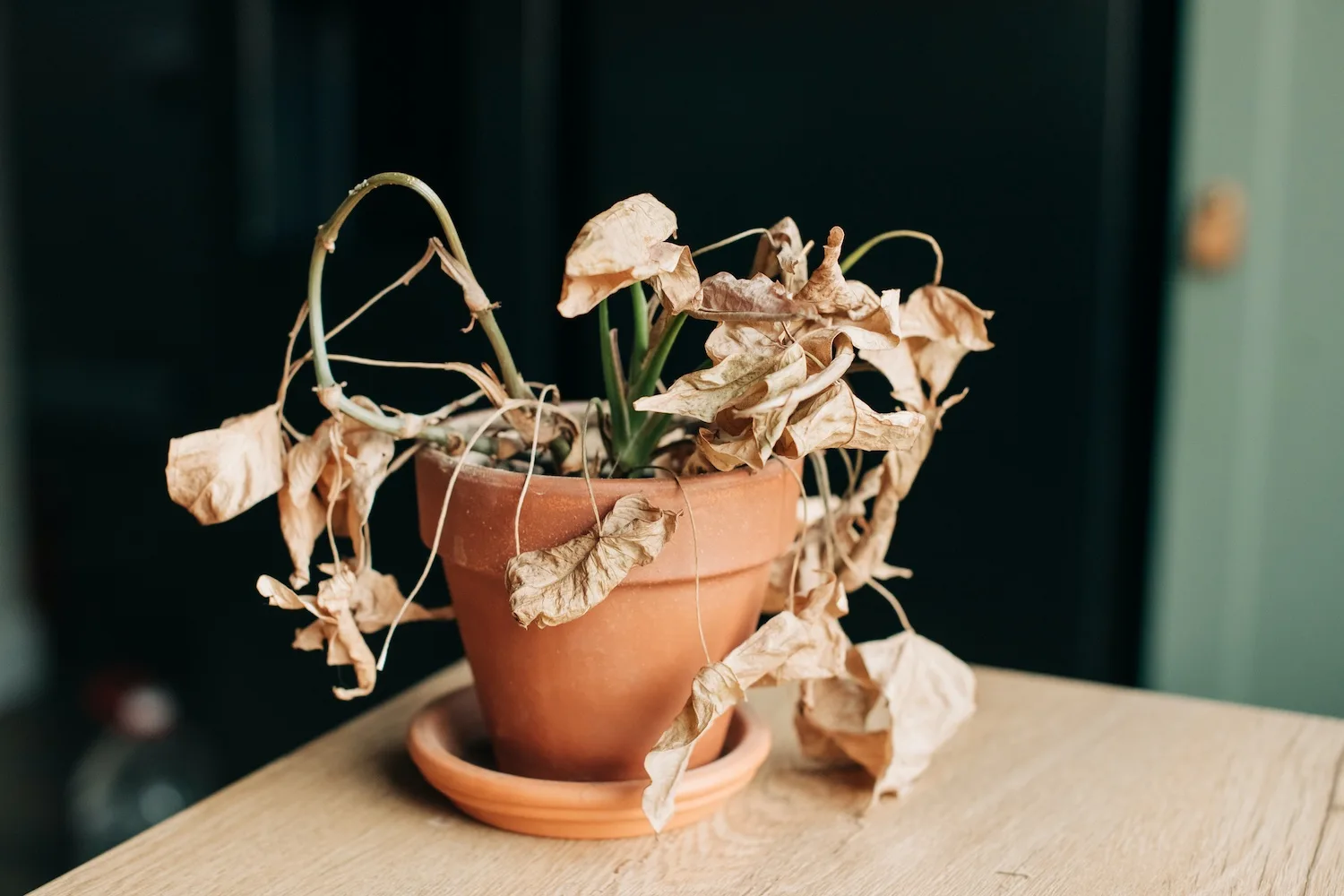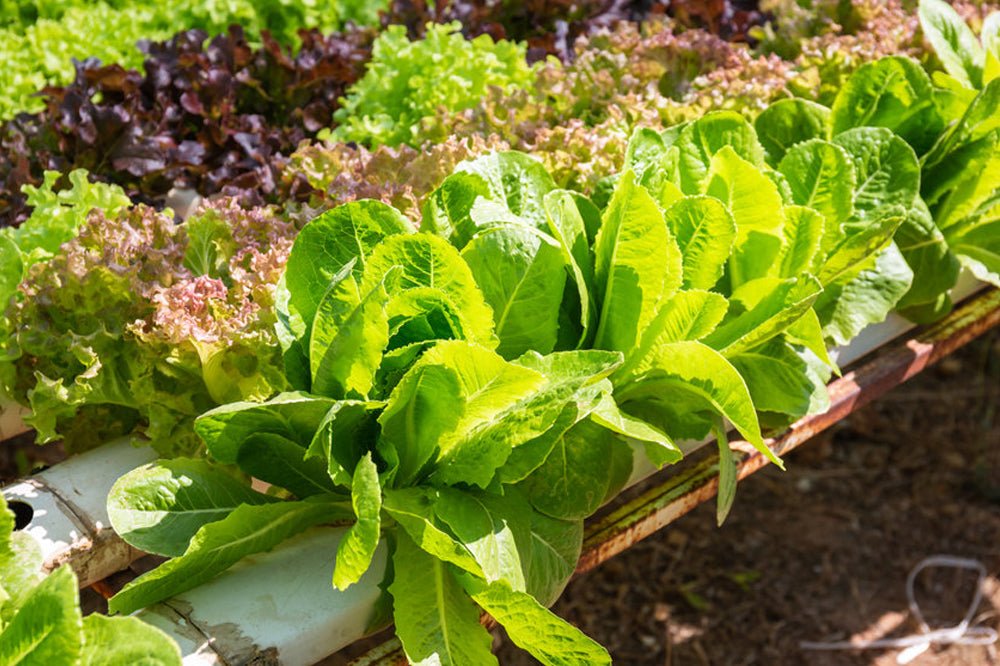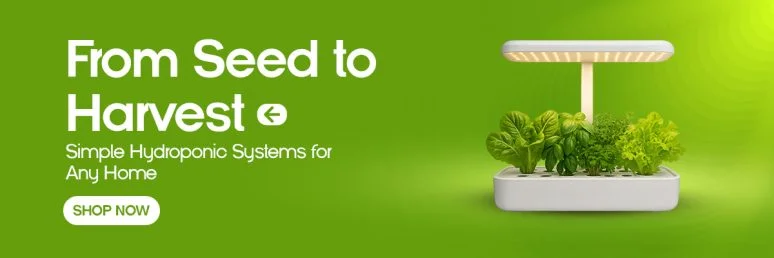Best Vegetables for Hydroponic Systems: Easiest and Most Profitable Crops
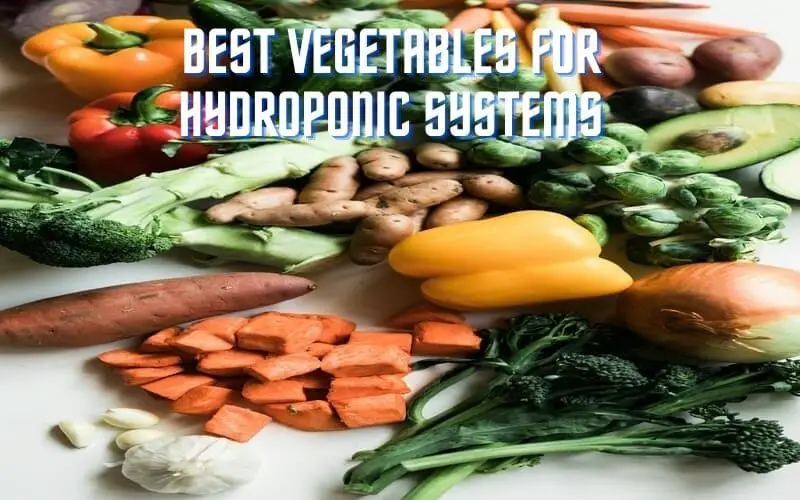
Article-At-A-Glance
- Leafy greens like lettuce and spinach are ideal starter crops for hydroponic systems, offering harvest cycles as quick as 30 days with up to 12 harvests annually
- Herbs including basil and mint provide continuous income with multiple harvests and premium market prices up to $20/lb
- Matching the right system to your crop is crucial – NFT works best for leafy greens while DWC systems are ideal for fruiting plants
- Vertical growing techniques can increase yields by 200-300% for crops like cherry tomatoes and strawberries
- VegBed’s hydroponic systems are specifically engineered to maximize production of these high-value crops while minimizing resource inputs
Choosing the right vegetables for your hydroponic system can be the difference between a thriving garden and a costly experiment. Not all plants perform equally in soilless environments, and understanding which crops thrive can dramatically impact your success rate and potential profits.
If you’re looking to maximize your hydroponic investment, VegBed’s innovative growing systems are designed specifically to optimize production of the most profitable and easy-to-grow hydroponic crops. With proper crop selection and the right equipment, even beginners can achieve professional-level results in surprisingly small spaces.
Let’s explore the vegetables that consistently outperform in hydroponic environments, delivering exceptional yields, faster growth cycles, and superior quality compared to their soil-grown counterparts.
Must-Know Highlights for Hydroponic Success
Hydroponics accelerates growth cycles by 30-50% compared to soil growing, but this advantage varies significantly by crop. Plants with shorter root systems and lower nutritional demands typically perform best in water-based systems. Temperature requirements also vary dramatically—leafy greens prefer cooler environments (65-75°F), while fruiting plants thrive in warmer conditions (70-80°F). Understanding these fundamental differences will prevent costly mistakes and help you select crops that match your specific system capabilities.
Why These 7 Vegetables Dominate Hydroponic Gardens
“Hydroponic Vegetables Less Nutritious …” from www.scientificamerican.com and used with no modifications.
Top Performing Hydroponic Crops by Growth Rate and Profit Potential
Lettuce: 30-45 days to harvest | 8-12 harvests annually | 90% success rate for beginners
Basil: 28 days to first harvest | Continuous harvesting for 3-4 months | $15-20/lb market value
Spinach: 35-45 days to harvest | 8-10 harvests annually | Requires 30% less nutrients than soil growing
Cherry Tomatoes: 60-80 days to first harvest | Produces for 6-8 months | 2-3x yield vs. soil growing
Strawberries: 60 days to first fruit | Year-round production possible | Premium pricing in off-seasons
The vegetables that consistently outperform in hydroponic systems share key characteristics: efficient water usage, rapid growth cycles, compact growing habits, and high market value. These elite performers deliver exceptional returns on investment by maximizing space efficiency and minimizing resource inputs. For commercial growers, these crops hit the sweet spot of manageable growing complexity balanced with strong market demand and premium pricing opportunities.
While exotic specialty crops might command higher prices, their extended growth cycles and complex requirements make them less suitable for beginners and less profitable per square foot of growing space. The crops listed above consistently deliver reliable results across various hydroponic systems and skill levels.
Let’s explore each category in detail to understand why these particular vegetables consistently outperform others in hydroponic environments.
Leafy Greens: The Perfect Starter Crops
“Are Hydroponically-Grown Vegetables as …” from cathe.com and used with no modifications.
Leafy greens are the undisputed champions of hydroponic growing, offering the perfect combination of rapid growth, high yields, and exceptional system compatibility. Their shallow root systems and low nutrient demands make them forgiving for beginners while still being commercially viable for professionals. Most importantly, these crops can be densely planted—often at 25-30 plants per square meter—maximizing production efficiency in limited spaces.
Lettuce: 30-Day Harvest with 12x Annual Yields
- Butterhead varieties like Bibb and Boston offer the fastest turnaround at 30-35 days
- Romaine provides higher per-plant yields but requires 45-52 days to maturity
- Red leaf varieties command premium prices but may grow 15-20% slower than green varieties
- Can be grown at densities of 25 heads per square meter in NFT or raft systems
- Thrives in cooler nutrient solutions (65-68°F) with EC levels of 0.8-1.2
Lettuce remains the gold standard for hydroponic beginners and commercial operations alike. Its exceptional growth rate allows for complete crop turnover every 30-35 days in optimal conditions. This rapid cycle translates to potentially 10-12 harvests annually from the same growing area—a productivity level impossible in traditional soil farming. Butterhead varieties perform exceptionally well in Nutrient Film Technique (NFT) systems, while romaine thrives in Deep Water Culture (DWC) setups due to its larger root mass.
The key advantage of hydroponic lettuce is consistent quality year-round. Without soil-borne diseases or pests, nearly every plant reaches market quality, eliminating the 15-25% waste factor common in field production. This predictability makes lettuce ideal for consistent income streams and reliable production scheduling.
Spinach: High Nutrient Density in Small Spaces
Spinach outperforms almost every other crop in terms of nutritional density per square foot of growing space. In hydroponic systems, spinach reaches harvest maturity in just 35-42 days—about 30% faster than soil cultivation. The plant’s compact growth habit allows for dense planting of up to 30-32 plants per square meter, creating an extremely efficient production model for small-scale and commercial growers alike.
The exceptional space efficiency of hydroponic spinach translates directly to increased profits. A single square meter can produce 4-5 kg of spinach annually with proper succession planting, generating $50-80 in wholesale revenue or $100-150 in direct-to-consumer sales. The key to maximizing spinach production is maintaining cooler nutrient temperatures (60-65°F) and slightly higher nutrient concentration (EC 1.8-2.2) than lettuce requires.
Kale: Cold-Tolerant Superfood with Premium Market Value
Kale’s superfood status and exceptional cold tolerance make it a standout performer for hydroponic systems, particularly in northern climates. This robust leafy green matures in 45-60 days and maintains consistent production for 3-4 months with proper harvesting techniques. The outer leaves can be continuously harvested while allowing the plant to continue producing, creating an extended harvest window unmatched by most other leafy greens.
Herbs That Generate Continuous Income
Culinary herbs represent the highest profit-per-square-foot opportunity in hydroponic production. These aromatic plants command premium prices while requiring minimal growing space and offering extended harvest periods through proper pruning techniques. Most herbs thrive in similar environmental conditions, allowing growers to diversify offerings without creating complex growing zones. The continuous harvesting model provides steady income streams compared to single-harvest crops. For more insights, check out the most profitable hydroponic crops.
Basil: The $20/lb Profit Powerhouse
Basil consistently ranks as the most profitable herb for hydroponic production, commanding wholesale prices of $15-20 per pound and retail prices reaching $3-4 per ounce. A single well-maintained basil plant can produce for 3-4 months, yielding 8-12 ounces of marketable product. The key to maximizing basil production is regular harvesting—cutting just above leaf nodes encourages bushier growth and increases yields by 40-60% compared to single-harvest methods.
The ideal conditions for hydroponic basil include temperatures of 72-80°F, moderate nutrient strength (EC 1.6-1.8), and at least 14-16 hours of light. Unlike many herbs, basil performs exceptionally well under LED grow lights, developing full flavor profiles and aromatic qualities comparable to field-grown plants. For maximum production, maintain 8-10 inches between plants and harvest when plants reach 8-10 inches tall, leaving 4-5 inches of growth for regeneration.
Cilantro: Fast-Growing with Year-Round Demand
Cilantro’s exceptional growth rate and consistent market demand make it a reliable profit generator in hydroponic systems. The crop reaches first harvest in just 21-28 days and produces multiple cuttings before needing replacement. Unlike soil growing where cilantro quickly bolts in warm weather, hydroponic cilantro maintains quality production year-round when temperatures are kept between 65-72°F and plants receive 12-14 hours of moderate-intensity light.
Mint: Incredible Growth Rate with Multiple Harvests
Mint’s aggressive growth habit, which creates challenges in soil gardens, becomes a significant advantage in hydroponic systems where its spread can be contained. A well-maintained mint plant produces harvestable quantities every 2-3 weeks for up to 6 months. The high essential oil content develops fully in hydroponic environments, creating premium-quality product that commands $2-3 per ounce in direct markets and strong wholesale demand from restaurants and cocktail bars.
High-Value Fruiting Plants Worth Your Investment
“Hydroponic Vegetable and Herb …” from gpnmag.com and used with no modifications.
While fruiting plants require more advanced hydroponic techniques and longer growing periods, their exceptional yields and extended harvest windows justify the additional investment for experienced growers. These crops typically require larger systems with increased support structures, higher nutrient concentrations, and more precise environmental controls. The payoff comes in the form of production cycles 2-3 times longer than leafy greens and significantly higher per-plant yields.
Cherry Tomatoes: Vertical Growing for Maximum Space Efficiency
Cherry tomatoes represent the perfect entry point into fruiting crops for hydroponic growers. These compact plants produce continuously for 4-6 months, yielding 3-5 pounds of fruit per square foot of growing space—about 3 times the production rate of soil gardens. Indeterminate varieties like ‘Sweet 100’ and ‘Sun Gold’ perform exceptionally well in hydroponic systems, developing full flavor profiles when grown with EC levels of 2.5-3.0 and temperatures maintained between 72-78°F during fruiting stages.
Bell Peppers: Premium Prices and Extended Harvests
Bell peppers thrive in hydroponic environments, producing glossy, uniform fruits that command premium prices in both wholesale and direct markets. The controlled environment allows for growing specialty varieties like yellow, orange, and purple peppers that typically yield $3-5 per pound compared to standard green peppers at $1.50-2.50 per pound. Hydroponic peppers reach first harvest in 70-90 days but continue producing for 8-10 months with proper care, making them exceptional long-term investments.
The key to successful pepper production is maintaining higher nutrient concentrations (EC 2.0-3.0) and warmer temperatures (75-82°F) than required by leafy crops. Dutch bucket systems using coconut coir or perlite mediums consistently outperform other methods for pepper production, allowing the large root systems to access both oxygen and abundant nutrients. Plants should be spaced 18-24 inches apart and trained to 2-3 main stems using vertical supports.
Cucumbers: Trellising Techniques for 2x Production
Hydroponic cucumbers develop exceptional quality and yields when properly trellised in vertical growing systems. European seedless varieties consistently outperform traditional slicing cucumbers in hydroponic environments, producing straighter fruits with thinner skins and no bitterness. These premium cucumbers command wholesale prices 30-50% higher than field-grown alternatives and develop in just 45-55 days from transplanting. Learn more about how big hydroponic plants get to maximize your yield.
The most successful production method involves training plants to a single vertical stem and removing all side shoots and female flowers for the first 18-24 inches of growth. This technique directs energy to establishing a strong root system before fruit production begins. Once fruiting starts, plants produce 2-3 marketable cucumbers weekly for 10-12 weeks, yielding 15-20 pounds per plant in total. Maintaining temperatures of 72-78°F maximizes production while preventing common issues like fruit abortion.
Strawberries: Year-Round Harvests with Vertical Systems
Strawberries represent one of the most space-efficient fruiting crops for hydroponic production, especially when grown in vertical tower systems. Day-neutral varieties like ‘Albion’ and ‘San Andreas’ produce continuously for 4-6 months in controlled environments rather than the 3-4 week season typical in field production. This extended harvest window allows growers to target premium off-season market prices that can reach $5-8 per pint compared to in-season prices of $2-4. For more insights on profitable hydroponic crops, check out this article on most profitable hydroponic crops.
Vertical growing arrangements can accommodate 4-6 plants per square foot of floor space, dramatically increasing yield potential compared to horizontal systems. The key to successful strawberry production is maintaining cooler root temperatures (60-65°F) while providing warmer ambient conditions (70-75°F) during fruiting periods. Plants typically begin producing 60-70 days after transplanting and yield 1-1.5 pounds per plant over their productive lifespan.
Matching the Right Hydroponic System to Your Crop
“Grow Vegetables in Hydroponics” from letpot.com and used with no modifications.
The single most critical decision for hydroponic success is matching your growing system to your chosen crops. Each crop category has specific root structure and oxygenation requirements that perform optimally in certain system types. Using the wrong system for your crop can reduce yields by 30-50% even when all other variables are optimized. Understanding these relationships allows you to maximize production efficiency and minimize resource inputs.
NFT Systems: Perfect for Leafy Greens
Nutrient Film Technique (NFT) systems provide the ideal balance of water, nutrients, and oxygen for shallow-rooted crops like lettuce, spinach, and most herbs. The thin film of constantly flowing nutrient solution delivers perfect oxygenation to these crops while maintaining ideal moisture levels. Plants in properly designed NFT systems typically grow 15-20% faster than in other hydroponic methods due to the optimal oxygen exposure at the root zone.
For maximum NFT performance, maintain channel slopes of 1-1.5% and flow rates of 1-2 liters per minute. These specifications ensure nutrients reach all plants evenly without creating stagnant zones. Temperature management is crucial in NFT systems—nutrient solution should be kept between 65-68°F for leafy greens and 68-72°F for herbs to prevent root disease and maximize nutrient uptake. For more insights on maintaining optimal conditions, check out this guide on grow tent temperature and humidity control.
DWC Buckets: Ideal for Fruiting Plants
Deep Water Culture (DWC) bucket systems provide the large water volume and oxygenation capacity required by heavy-feeding fruiting plants. The significant nutrient reservoir creates a buffer against pH and EC fluctuations that becomes increasingly important during heavy fruiting stages. Tomatoes, peppers, and cucumbers develop extensive root systems that thrive with the abundant oxygen provided by quality air stones (delivering at least 1 liter of air per minute per plant).
For optimal results with fruiting crops in DWC systems, use 5-gallon buckets with 10-inch net pots that provide adequate space for root development. Maintain at least 4 inches of air gap between the net pot and nutrient solution to encourage oxygen-rich root growth. This configuration consistently outperforms smaller bucket sizes, increasing yields by 25-30% for tomatoes and peppers.
Tower Systems: Space-Saving Solutions for Herbs
Vertical tower systems offer exceptional space efficiency for smaller crops like herbs, strawberries, and compact leafy greens. These systems can increase production per square foot by 300-400% compared to traditional horizontal layouts, making them ideal for maximizing profits in limited growing areas. Modern tower designs that incorporate targeted irrigation and uniform light distribution solve many of the challenges associated with early vertical systems. For those interested in exploring more about hydroponic setups, check out this guide on hydroponics explained.
The key to tower system success is balancing plant density with adequate light penetration. Most commercial systems place ports 8-10 inches apart vertically and offset horizontally to prevent shading. For herb production, these systems should maintain consistent moisture without waterlogging by using timers set for 1-minute irrigation cycles every 15-20 minutes during daylight periods.
Common Mistakes That Kill Hydroponic Profits
“How to save a dying or dead plant …” from www.bhg.com.au and used with no modifications.
Even the most carefully selected crops can underperform when common hydroponic mistakes undermine their growth potential. These prevalent errors affect both beginners and experienced growers, often reducing yields by 40-60% below the system’s true capacity. Understanding and avoiding these pitfalls can dramatically improve your success rate and return on investment regardless of your specific crop selection.
Overcrowding: The #1 Yield Reducer
Overcrowding consistently ranks as the most common profit-killing mistake in hydroponic production. The temptation to maximize plants per square foot often leads to diminished yields, reduced quality, and increased disease pressure. While hydroponic systems can support higher planting densities than soil gardens, each crop has optimal spacing requirements that should be respected. Lettuce production drops by approximately 15% for each inch below the recommended 8-inch spacing between plants. Tomato yields decrease by up to 40% when plants are spaced less than 18 inches apart in bucket systems.
The ideal approach balances maximum plant density with optimal individual plant performance. For most crops, this means reducing theoretical maximum density by 15-20% to allow for proper air circulation, light penetration, and root zone development. This slight reduction in plants per square foot typically results in 25-35% higher total yield due to improved individual plant performance.
pH Imbalances: Simple Fixes for Healthier Plants
pH management represents one of the simplest yet most critical aspects of hydroponic success. Each 0.5 pH unit deviation from optimal range reduces nutrient availability by 30-40% for key elements. Leafy greens perform best in the 5.8-6.2 range, while fruiting crops prefer 5.5-6.0. Daily pH fluctuations are normal and beneficial, but the average should remain within these targeted ranges.
The most effective pH management approach uses minimal adjustments with properly diluted pH up/down solutions (1 part solution to 10 parts water). Adding adjusters directly to nutrient reservoirs in concentrated form creates localized extreme pH zones that damage roots and beneficial microbes. For most home and small commercial systems, pH should be checked daily and adjusted when readings fall outside the target range for three consecutive days, allowing for normal fluctuations without unnecessary intervention.
Maintaining proper pH becomes significantly easier by starting with quality water sources below 200 PPM total dissolved solids. Hard water with high mineral content creates persistent pH stability issues that require frequent adjustment and reduce nutrient availability. Consider water filtration systems if your source water exceeds these parameters.
Ignoring Temperature Controls: Crop-Specific Requirements
Temperature management represents the most overlooked aspect of hydroponic production among beginners and intermediate growers. Root zone temperatures impact nutrient uptake more significantly than ambient air temperatures, yet many growers monitor only air conditions. Nutrient solution temperatures above 75°F reduce dissolved oxygen by 10-15% compared to ideal ranges (65-70°F), dramatically impacting root health and nutrient absorption capacity.
Different crop categories have distinct temperature requirements that must be respected for optimal production. Leafy greens perform best with cooler nutrient solutions (63-68°F) and moderate ambient temperatures (68-75°F). Fruiting crops develop most efficiently with slightly warmer nutrient solutions (68-72°F) and higher ambient temperatures during fruiting stages (75-80°F). Maintaining these specific ranges can increase yields by 20-30% compared to systems with uncontrolled temperature variations.
Simple solutions like insulating nutrient reservoirs, using chillers during summer months, and separating lights from growing areas can maintain these optimal temperatures without extensive climate control investments. These approaches prevent the common summer production crash that many hydroponic growers experience when temperatures rise beyond optimal ranges.
Your 30-Day Action Plan to Start Growing Profitably
“8 Best Hydroponic Vegetables to Grow …” from www.allthatgrows.in and used with no modifications.
The path to hydroponic success begins with methodical planning and system preparation before the first seed ever touches water. Follow this proven 30-day action plan to establish a productive and profitable hydroponic garden that avoids the common pitfalls that derail many beginners. This systematic approach ensures your system develops properly from the foundation up, creating optimal growing conditions from day one.
Days 1-7: System selection and setup focused on one crop category (leafy greens, herbs, or fruiting plants). Purchase high-quality components that match your specific crop requirements rather than general-purpose equipment. Assemble and test systems with plain water to identify and fix leaks or flow issues. Days 8-14: Water quality analysis and preparation. Obtain proper testing equipment for pH, EC/PPM, and temperature. Establish baseline readings for your water source and prepare nutrient solutions matched to your specific crops. Days 15-21: Environment optimization including light positioning, air circulation, and temperature control. Create consistent growing conditions before introducing plants. Days 22-30: Start with proven performer varieties of your chosen crop category, beginning with 30-50% of your system capacity to master maintenance routines before scaling to full production.
Frequently Asked Questions
The hydroponic learning curve can seem steep for beginners, but understanding a few fundamental principles makes success much more accessible. These frequently asked questions address the most common concerns new growers encounter when selecting and establishing their first crops. Each response is based on proven practices from commercial operations scaled appropriately for home and small-scale systems.
The guidance provided here represents consensus best practices from commercial hydroponic operations and research institutions, not theoretical approaches or untested methods. Following these evidence-based recommendations will significantly increase your chances of success with any of the recommended crop varieties.
How much light do hydroponic vegetables really need?
Light requirements vary significantly by crop category and growth stage. Leafy greens require 10-14 hours of moderate intensity light (200-400 μmol/m²/s PPFD) while fruiting crops need 12-16 hours of higher intensity illumination (400-600 μmol/m²/s). These specific light intensity measurements translate to approximately 25-35 watts of quality LED lighting per square foot for leafy greens and 40-50 watts per square foot for fruiting crops. Proper light positioning is equally important—maintain lights 12-18 inches above plant canopies for even distribution and adjust height as plants grow.
Supplemental lighting becomes essential during shorter winter days when natural light falls below these threshold levels. Without adequate light intensity, plants develop elongated stems, pale leaves, and dramatically reduced yields regardless of nutrient quality or system design. The investment in proper lighting typically pays for itself within 1-2 growing cycles through improved production quality and quantity. For more tips on maximizing yields, check out this guide on profitable hydroponic crops.
Can I mix different vegetables in the same hydroponic system?
While technically possible, mixing different crop categories in the same nutrient solution significantly compromises performance for at least some of your plants. Each crop type has specific nutritional requirements, temperature preferences, and growth rates that rarely align perfectly. The most successful approach groups plants with similar needs—leafy greens with other leafy greens, herbs with herbs, and fruiting crops together. This specialization allows you to optimize all environmental variables for maximum production rather than accepting compromises that reduce overall system performance.
Which vegetables are NOT suitable for hydroponics?
Root crops like potatoes, carrots, and beets generally perform poorly in hydroponic systems compared to soil cultivation. Their specialized root structures develop abnormally in most soilless environments, resulting in misshapen products with reduced yields. Crops requiring vernalization (exposure to extended cold periods) such as certain garlic varieties also struggle in controlled environment agriculture. Large plants with extensive support requirements like full-size watermelons and pumpkins typically don’t justify their space requirements in terms of production value.
Plants with extremely long maturation periods (100+ days) typically offer poor return on investment in hydroponic systems where operational costs accrue daily. The exception to this rule applies to crops commanding premium prices that justify extended production cycles, such as certain pepper varieties and tree fruits grown in specialized greenhouse operations.
How do I prevent pests in my indoor hydroponic garden?
Effective pest prevention relies on creating physical barriers and maintaining optimal plant health rather than reactive treatments. Install fine mesh screens (400 micron or smaller) over all ventilation openings to prevent insect entry. Establish strict sanitation protocols including dedicated indoor footwear, regular hand washing before plant handling, and quarantining new plants for 7-10 days before introducing them to your main growing area. Maintain optimal growing conditions—plants experiencing temperature, light, or nutrient stress become significantly more susceptible to pest infestations due to reduced natural defense mechanisms. For more on maintaining the right nutrient balance, check out this resource.
What’s the minimum space needed to grow profitable hydroponic crops?
Profitable small-scale production can begin with as little as 20 square feet of growing space when focusing on high-value crops like specialty herbs and leafy greens. This minimal footprint can generate $100-150 monthly in direct-to-consumer sales with proper crop selection and succession planting. Scaling to 100 square feet enables potential monthly revenues of $500-800 for experienced growers implementing vertical techniques and targeting premium market segments.
The key factor in small-space profitability isn’t the absolute square footage but rather the efficiency of space utilization. Vertical growing techniques can increase production per square foot by 300-400% compared to single-level systems. Selecting crops with harvest cycles under 45 days allows for more annual growing cycles, dramatically increasing yearly revenue potential from limited space.
Hydroponic systems offer a unique and efficient way to grow vegetables without soil. Some of the best vegetables for hydroponic systems include lettuce, spinach, and herbs like basil and mint. These crops are not only easy to grow but also highly profitable. For more insights on this topic, check out this article on five best crops for hydroponic systems.
